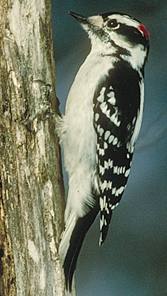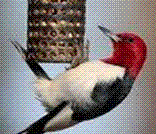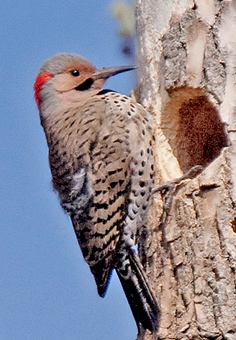Blog - General
Fun Woodpecker Facts

Most woodpeckers have four toes. Two face forward and two face backward. This arrangement is called zygodactyl.
Their short legs and sharp nails make it easier for them to cling to bark and even upside down hopping along branches and tree trunks.
A pair of stiff, centrally located tail feathers which provides leverage for the woodpecker to strike the tree with its beak. These feathers are not molted until their replacements have fully grown in.
A straight, chisel-like bill is used to excavate holes in trees for nesting and roosting. It is also used for foraging insects, insect eggs and larva.
Bristle-like feathers over their nostrils help to keep wood particles from being inhaled.
Very long tongues allow the birds to “worm” their way in to hard to reach places. There are hard, saliva coated bristles on the end of the tongue which aid in grabbing their prey. The tongue can also be used for lapping sap, or reaching into a bird feeder to snag seeds.
Woodpeckers gather acorns, nuts and fruit as well as bugs from tree surfaces. Flickers on the other hand lap ants off the ground and probe in to ant hills with their long tongue.
A woodpeckers bill strikes a tree at an amazing 12 MPH when drumming.
The average woodpecker is able to peck up to 20 pecks per second! The woodpecker is able to peck so much without injury due to the air pockets that help to cushion the woodpeckers brain. 
All woodpeckers have a characteristic wing-beat pattern while flying: 3 flaps and glide, 3 flaps and glide. In an undulating manner.
Woodpeckers create new holes every year. Thus, old cavities become homes for secondary cavity nesting birds such as chickadees, bluebirds, wrens, owls, and others.
Woodpeckers excavate a new cavity for nesting each year but only in dead trees. The continuing removal of dead trees, branches, and snags has reduced nesting habitat for woodpeckers. As a further result it has reduced nesting cavities for secondary cavity nesters as well. Leave dead trees standing. If you must remove a dead tree due to safety concerns, leave 10 to 15 feet of the tree trunk standing. It will provide foraging for woodpeckers as well as a site to excavate a new home.
